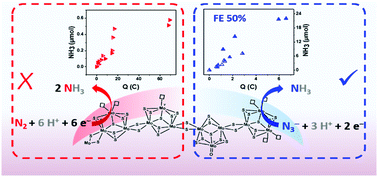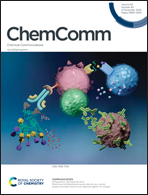Revisiting amorphous molybdenum sulfide's activity for the electro-driven reduction of dinitrogen and N-containing substrates†
Abstract
Ammonia (NH3) is a major feedstock of the chemical industry. The imperious need to decarbonize its production has stimulated a quest for efficient catalysts able to drive the direct electro-reduction of dinitrogen (N2) into NH3. A large number of materials have now been proposed for this reaction, including bioinspired molybdenum sulfide derivatives. Here, we revisit the potential of amorphous molybdenum sulfide to drive the electrocatalytic reduction of N2 and other substrates of nitrogenase. We find that this material exhibits negligible activity towards N2 but achieves efficient reduction of inorganic azides.

- This article is part of the themed collection: Bioinspired metal complexes for chemical transformations and catalysis


 Please wait while we load your content...
Please wait while we load your content...